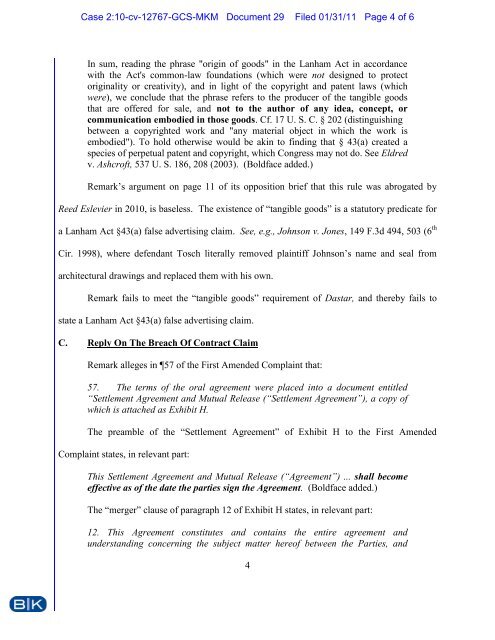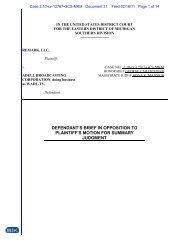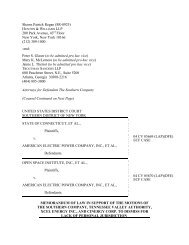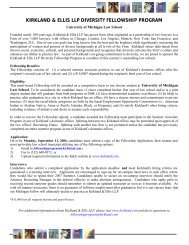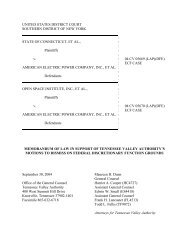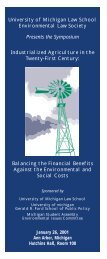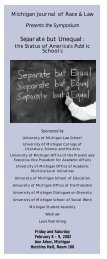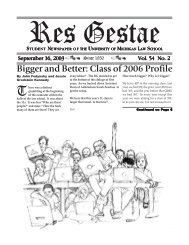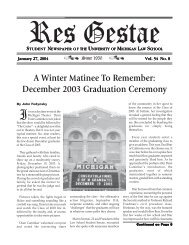REPLY BRIEF ON DEFENDANT'S MOTION TO DISMISS ...
REPLY BRIEF ON DEFENDANT'S MOTION TO DISMISS ...
REPLY BRIEF ON DEFENDANT'S MOTION TO DISMISS ...
Create successful ePaper yourself
Turn your PDF publications into a flip-book with our unique Google optimized e-Paper software.
Case 2:10-cv-12767-GCS-MKM Document 29 Filed 01/31/11 Page 4 of 6<br />
In sum, reading the phrase "origin of goods" in the Lanham Act in accordance<br />
with the Act's common-law foundations (which were not designed to protect<br />
originality or creativity), and in light of the copyright and patent laws (which<br />
were), we conclude that the phrase refers to the producer of the tangible goods<br />
that are offered for sale, and not to the author of any idea, concept, or<br />
communication embodied in those goods. Cf. 17 U. S. C. § 202 (distinguishing<br />
between a copyrighted work and "any material object in which the work is<br />
embodied"). To hold otherwise would be akin to finding that § 43(a) created a<br />
species of perpetual patent and copyright, which Congress may not do. See Eldred<br />
v. Ashcroft, 537 U. S. 186, 208 (2003). (Boldface added.)<br />
Remark‟s argument on page 11 of its opposition brief that this rule was abrogated by<br />
Reed Eslevier in 2010, is baseless. The existence of “tangible goods” is a statutory predicate for<br />
a Lanham Act §43(a) false advertising claim. See, e.g., Johnson v. Jones, 149 F.3d 494, 503 (6 th<br />
Cir. 1998), where defendant Tosch literally removed plaintiff Johnson‟s name and seal from<br />
architectural drawings and replaced them with his own.<br />
Remark fails to meet the “tangible goods” requirement of Dastar, and thereby fails to<br />
state a Lanham Act §43(a) false advertising claim.<br />
C. Reply On The Breach Of Contract Claim<br />
Remark alleges in 57 of the First Amended Complaint that:<br />
57. The terms of the oral agreement were placed into a document entitled<br />
“Settlement Agreement and Mutual Release (“Settlement Agreement”), a copy of<br />
which is attached as Exhibit H.<br />
The preamble of the “Settlement Agreement” of Exhibit H to the First Amended<br />
Complaint states, in relevant part:<br />
This Settlement Agreement and Mutual Release (“Agreement”) ... shall become<br />
effective as of the date the parties sign the Agreement. (Boldface added.)<br />
The “merger” clause of paragraph 12 of Exhibit H states, in relevant part:<br />
12. This Agreement constitutes and contains the entire agreement and<br />
understanding concerning the subject matter hereof between the Parties, and<br />
4


